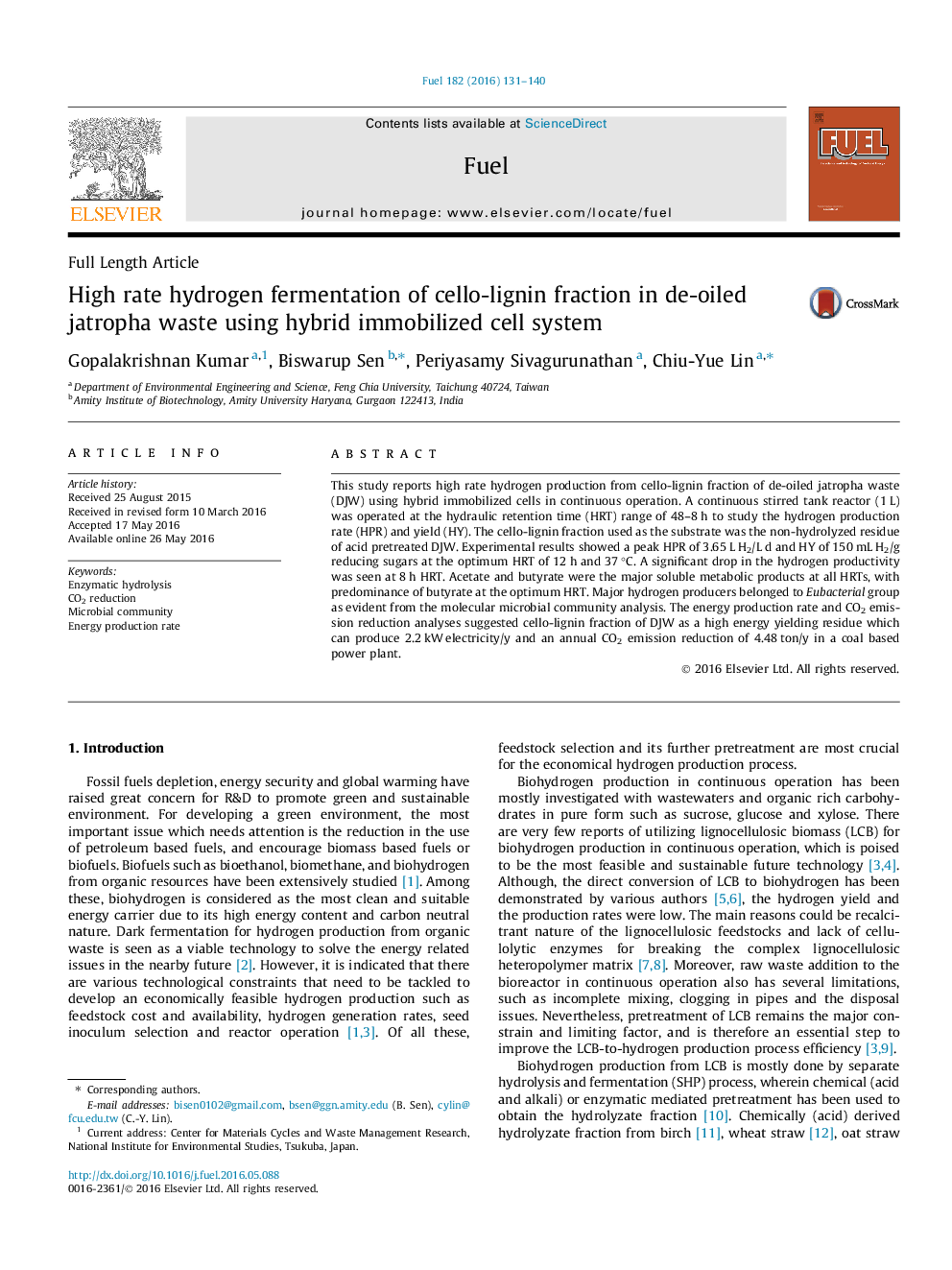| Article ID | Journal | Published Year | Pages | File Type |
|---|---|---|---|---|
| 6633402 | Fuel | 2016 | 10 Pages |
Abstract
This study reports high rate hydrogen production from cello-lignin fraction of de-oiled jatropha waste (DJW) using hybrid immobilized cells in continuous operation. A continuous stirred tank reactor (1 L) was operated at the hydraulic retention time (HRT) range of 48-8 h to study the hydrogen production rate (HPR) and yield (HY). The cello-lignin fraction used as the substrate was the non-hydrolyzed residue of acid pretreated DJW. Experimental results showed a peak HPR of 3.65 L H2/L d and HY of 150 mL H2/g reducing sugars at the optimum HRT of 12 h and 37 °C. A significant drop in the hydrogen productivity was seen at 8 h HRT. Acetate and butyrate were the major soluble metabolic products at all HRTs, with predominance of butyrate at the optimum HRT. Major hydrogen producers belonged to Eubacterial group as evident from the molecular microbial community analysis. The energy production rate and CO2 emission reduction analyses suggested cello-lignin fraction of DJW as a high energy yielding residue which can produce 2.2 kW electricity/y and an annual CO2 emission reduction of 4.48 ton/y in a coal based power plant.
Related Topics
Physical Sciences and Engineering
Chemical Engineering
Chemical Engineering (General)
Authors
Gopalakrishnan Kumar, Biswarup Sen, Periyasamy Sivagurunathan, Chiu-Yue Lin,
